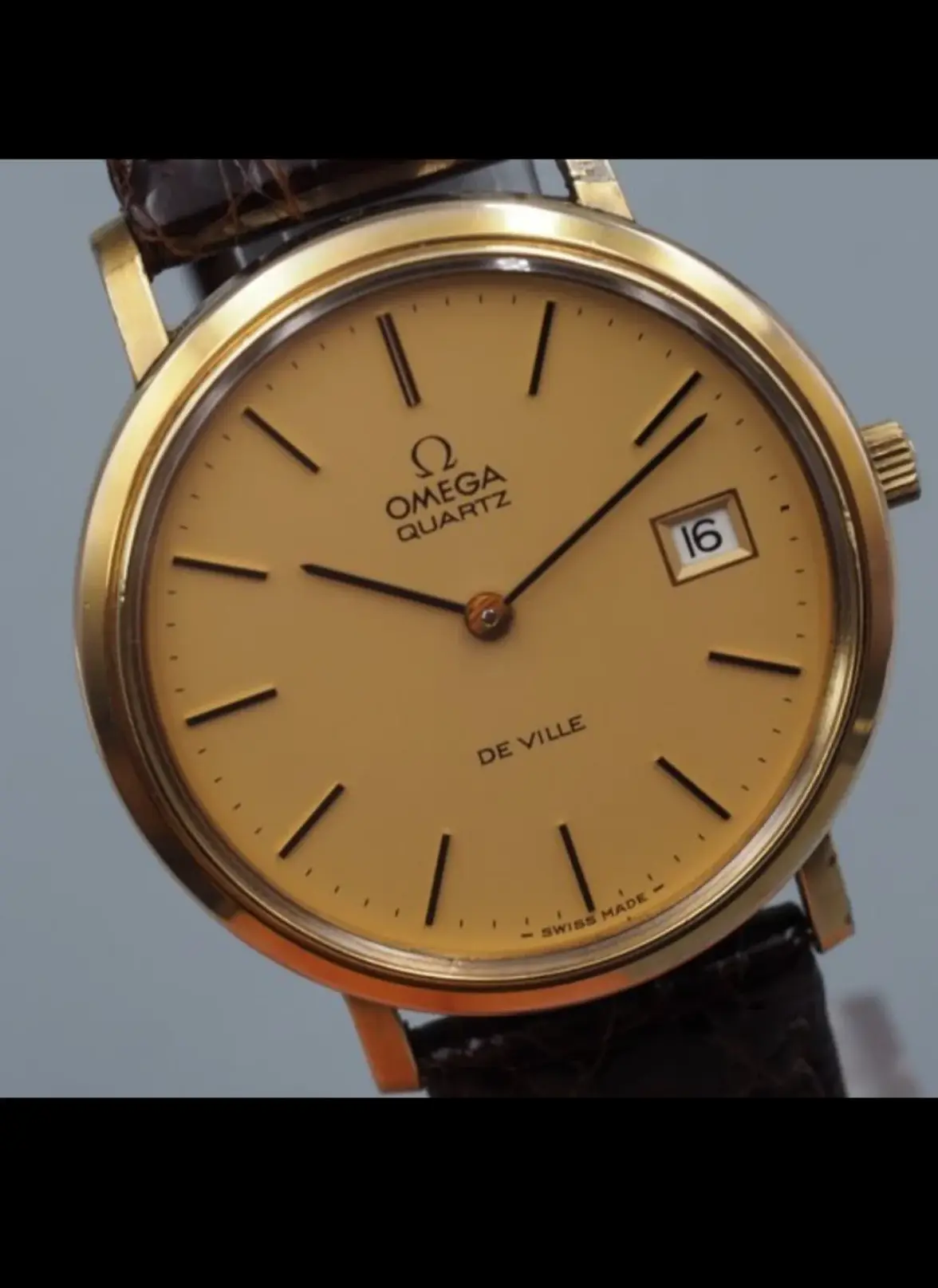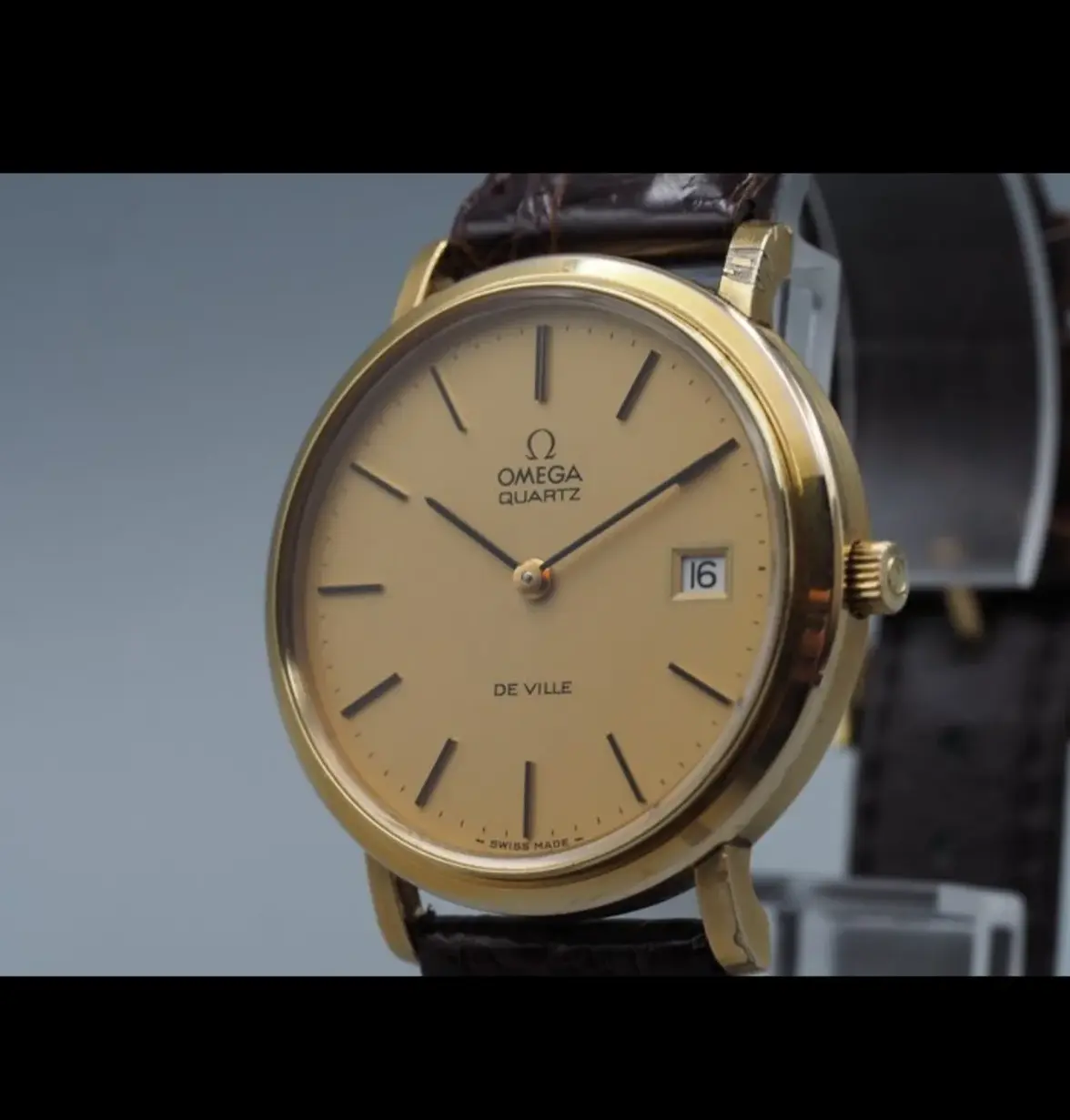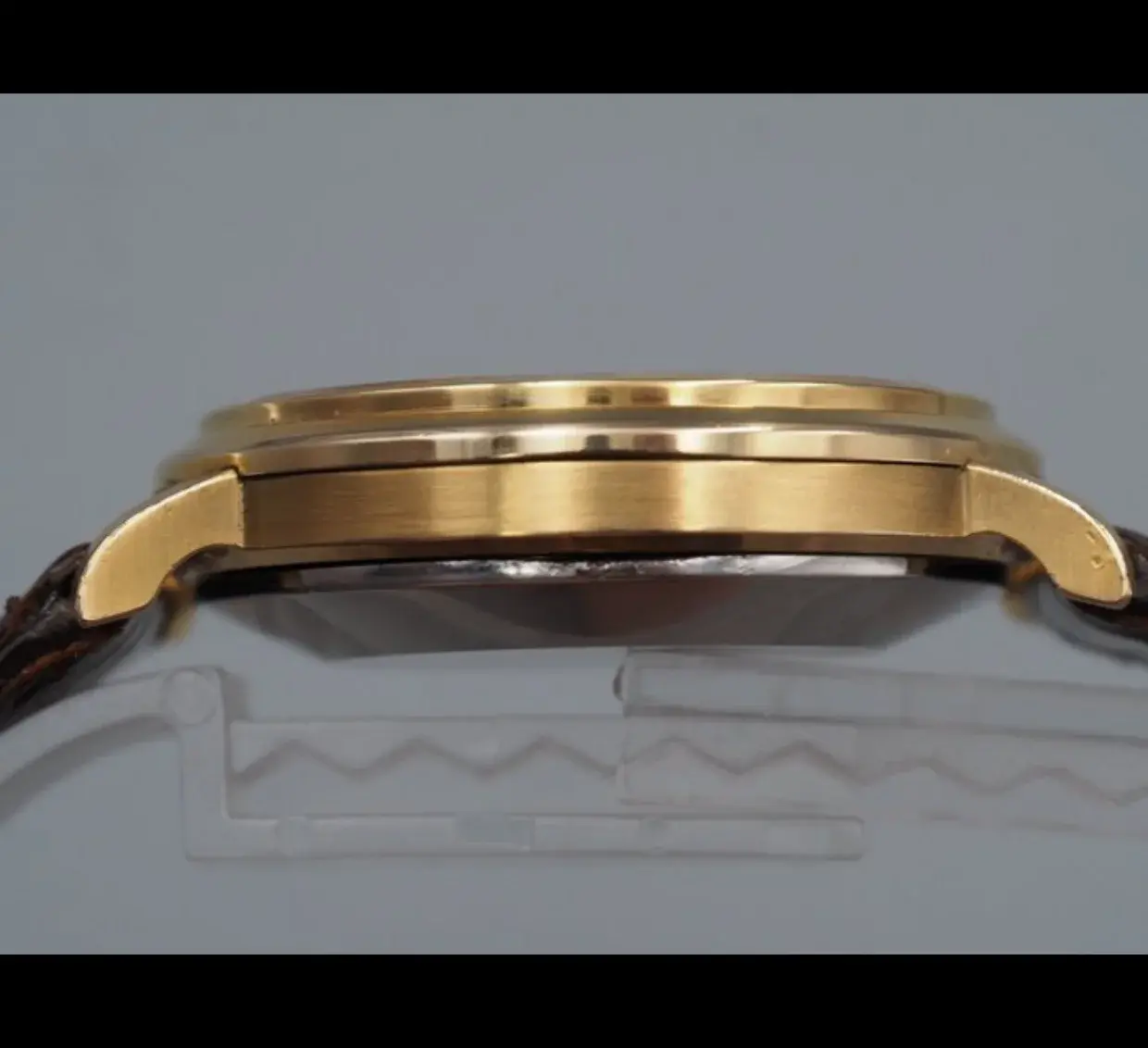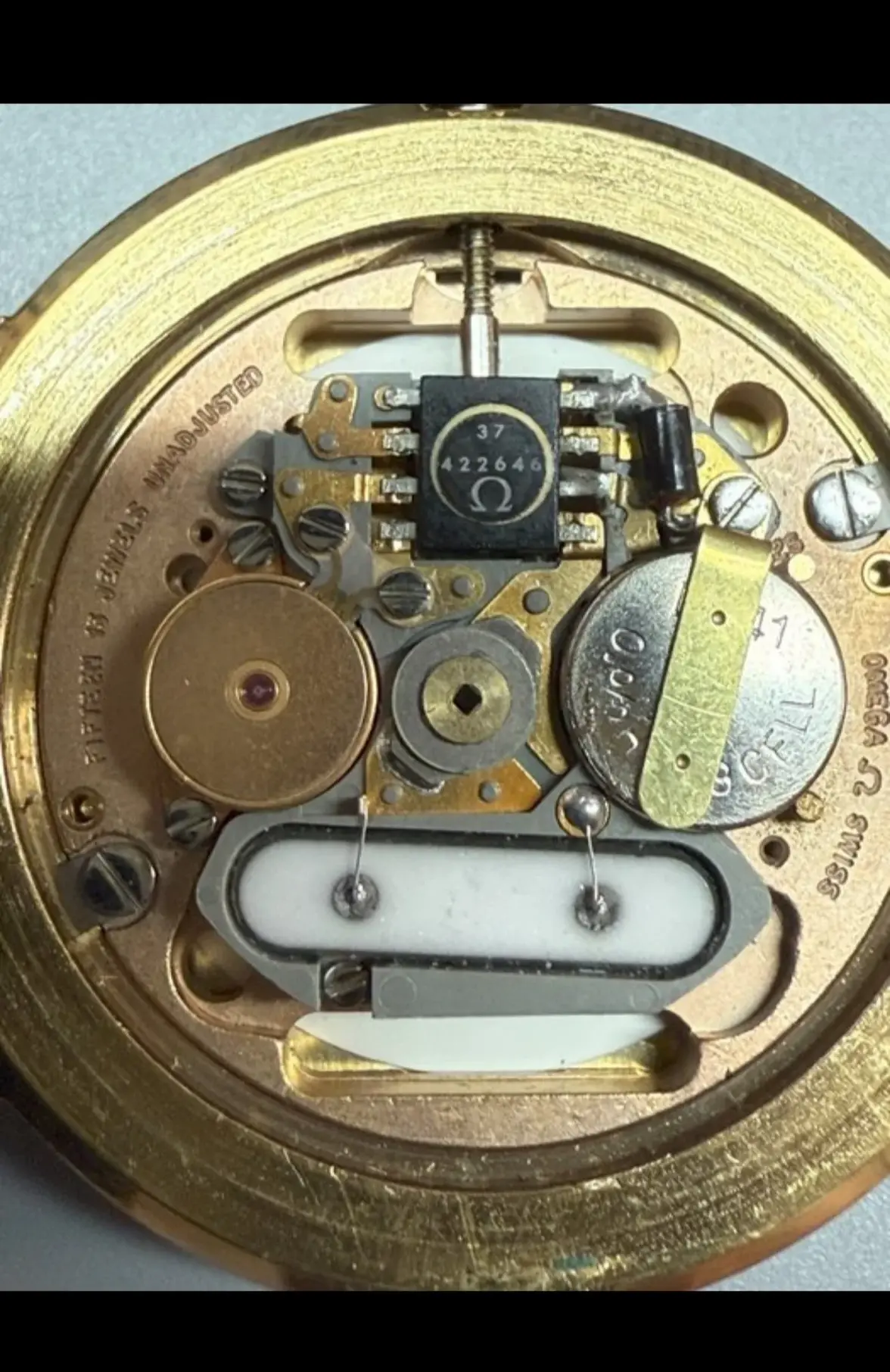De Ville from 70s
Dan S
·You had me excited until I saw the photos.
Dan S
·Because I have no interest in gold-plated quartz watches with chewed-up cases.
sheepdoll
·A lot of quartz watches have nice dials. Most of these were used till the battery failed. Then went into a drawer.
Such watches are not really serviceable. Timex and gas pump retailers changed watches into something disposable. The cost of repair outweighing any value.
A lot of these were also service award watches. One got after 10, 20 or 25 years when companies and employees were loyal to each other. If they were made from precious metal (mostly gold) they have long since been melted down. This leaves the plated and capped examples.
The OP watch is a nice one, with a fairly rare movement. In the modern world rare does not equal desirability. Some times just the opposite.
This style is more mechanical than electronic. There is a large stepper motor, which is prone to failure. The motor ran the wheel train from the escapement which has poor efficiency for turning the hands. Sometimes magnets were used to assist in the low amounts of power available.
The OP watch is more of a prototype than what later quartz evolved to with plastic plates and simple motors. Stamped out by robots and never touched by human hand.
The chips were made so long ago, that the factories have long turned to dust. The designs of these chips were done with clear sheets of plastic and black tape. While this was considered valuable. much was also destroyed to keep it away from the competition. Even if the design was saved in an electronic format, there are no systems left what can read the data. The chips also suffer from static electricity, which is how that was discovered to be detrimental to electronics. Working on this requires special anti static mats and tools. Not to mention clean rooms.
Such watches are not really serviceable. Timex and gas pump retailers changed watches into something disposable. The cost of repair outweighing any value.
A lot of these were also service award watches. One got after 10, 20 or 25 years when companies and employees were loyal to each other. If they were made from precious metal (mostly gold) they have long since been melted down. This leaves the plated and capped examples.
The OP watch is a nice one, with a fairly rare movement. In the modern world rare does not equal desirability. Some times just the opposite.
This style is more mechanical than electronic. There is a large stepper motor, which is prone to failure. The motor ran the wheel train from the escapement which has poor efficiency for turning the hands. Sometimes magnets were used to assist in the low amounts of power available.
The OP watch is more of a prototype than what later quartz evolved to with plastic plates and simple motors. Stamped out by robots and never touched by human hand.
The chips were made so long ago, that the factories have long turned to dust. The designs of these chips were done with clear sheets of plastic and black tape. While this was considered valuable. much was also destroyed to keep it away from the competition. Even if the design was saved in an electronic format, there are no systems left what can read the data. The chips also suffer from static electricity, which is how that was discovered to be detrimental to electronics. Working on this requires special anti static mats and tools. Not to mention clean rooms.
Davidt
·Yes it’s fairly common to find vintage watches from the late 60’s onwards with mint dials. My guess is there’s two main reasons for this.
1. Cases became much more water and dust resistant from the mid 60’s onwards.
2. Quartz technology really took off in the 70’s making accurate watches cheap and accessible for the masses. For many mechanical (or expensive, early quartz) watches bought in the 60’s and 70’s, this meant that when the time came for a service, people could pay for a relatively expensive service on their mechanical watch, or throw it into a drawer and get a more accurate quartz for less than the cost of said service. Many people chose to do this and so many watches have been in drawers for decades as a result.l as watches became disposable goods.
1. Cases became much more water and dust resistant from the mid 60’s onwards.
2. Quartz technology really took off in the 70’s making accurate watches cheap and accessible for the masses. For many mechanical (or expensive, early quartz) watches bought in the 60’s and 70’s, this meant that when the time came for a service, people could pay for a relatively expensive service on their mechanical watch, or throw it into a drawer and get a more accurate quartz for less than the cost of said service. Many people chose to do this and so many watches have been in drawers for decades as a result.l as watches became disposable goods.



